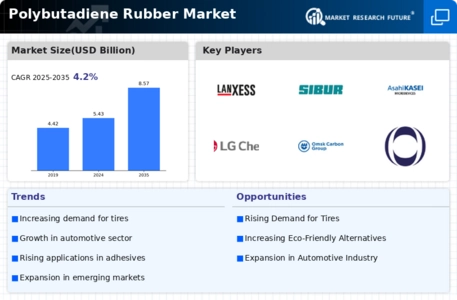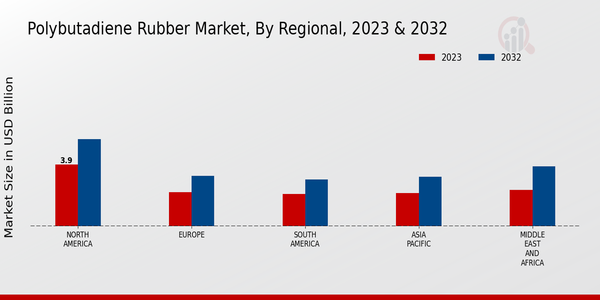Polybutadiene Rubber Market Summary
The global polybutadiene rubber market is projected to grow from 5.43 USD billion in 2024 to 8.57 USD billion by 2035.
Key Market Trends & Highlights
Polybutadiene Rubber Key Trends and Highlights
- The market is expected to experience a compound annual growth rate of 4.23 percent from 2025 to 2035.
- By 2035, the market valuation is anticipated to reach 8.57 USD billion, indicating robust growth potential.
- in 2024, the market is valued at 5.43 USD billion, reflecting a strong foundation for future expansion.
- Growing adoption of sustainable materials due to increasing environmental regulations is a major market driver.
Market Size & Forecast
| 2024 Market Size | 5.43 (USD Billion) |
| 2035 Market Size | 8.57 (USD Billion) |
| CAGR (2025-2035) | 4.24% |
Major Players
Lanxess, Kumho Petrochemical, TRANSSIBIRSKAYA NEFTEKHIMICHESKAYA KOMPANIYA, NEWPARA, SIBUR, SOil, Nizhnekamskneftekhim, Asahi Kasei, Ufaorgsintez, LG Chem, Omsk Carbon Group, PJSC Nizhnekamskneftekhim, JSR, INEOS, Sinopec, Versalis S.p.A


















